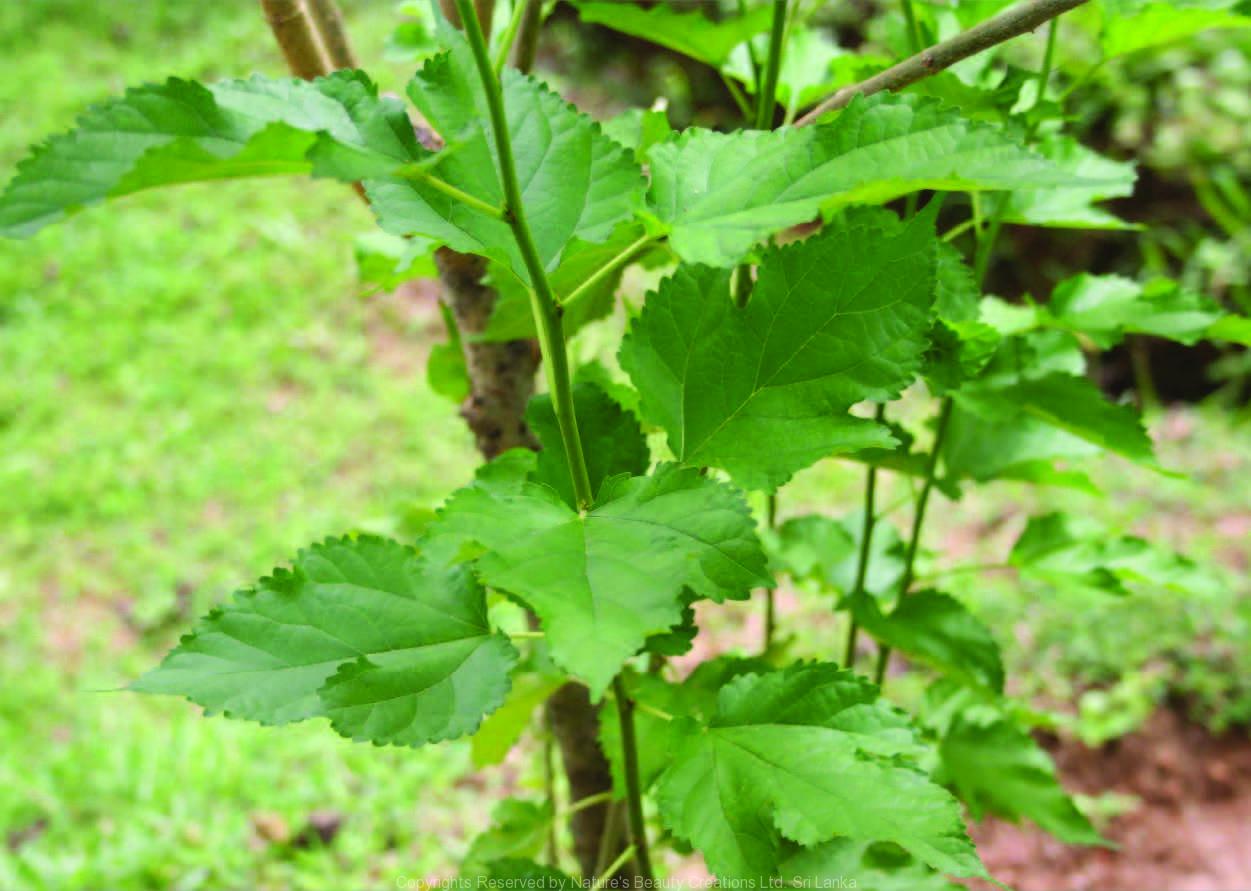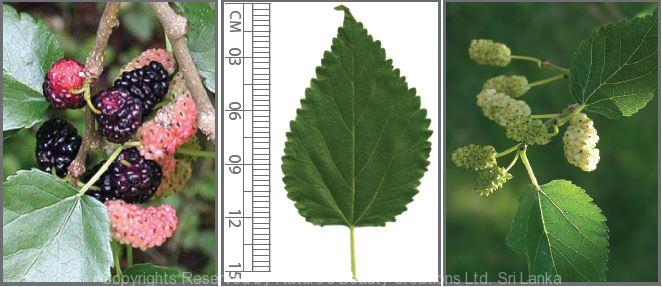

Traditional Knowledge
Useful plant parts :
Leaf and Root
Uses in traditional medicine :
- Leaves are used to treat kidney and bladder stones
- Root bark is diuretic, antitussive, expectorant, prescribed for oedema, and is used to treat high blood pressure, cough, bronchitis and asthma
Scientific Research
Chemical constituents:
Stibenes: mulberroside A, C and F oxyresveratrol, resveratrol and arylbenzofurans, prenylated flavonoids: moralbanone, mulberrofuran G, albanol B from fruits and root bark; β-carotene, α tocopherol from leaves
Bioactivity :
Mulberrofuran G and albanol B: antibacterial; methanol extracts of leaves: antioxidative; mulberroside F: inhibit melanin biosynthesis; mulberroside A: anti-inflammatory, antioxidative; arylbenzofurans: α-glucosidase inhibitors; anthocyanin extract of plant: antidiabetic; hydroalcohol extract and flavonoid fraction of leaves: nephroproprotective
Clinical:
Note :
Fruits are edible
References : Chung, K. O. et al., (2003), In-vitro and in-vivo anti-inflammatory effect of oxyresveratrol from Morus alba L., Journal of Pharmacy and Pharmacology, 55, 1695–1700. Du, J. et al., (2003), Antiviral flavonoids from the root bark of Morus alba L., Phytochemistry, 62, 1235–1238. Lee, S. H. et al., (2002), Mulberroside F Isolated from the Leaves of Morus alba Inhibits Melanin Biosynthesis, Biological and Pharmaceuti- cal Bulletin, 25(8), 1045—1048. Nematbakhsh, M. et al., (2013), Protective effects of the Morus alba L. leaf extracts on cisplatin-induced nephrotoxicity in rat, Res Pharm Sci., 8(2), 71-7. Sarikaphuti, A. et al., (2013), Preventive effects of Morus alba L. anthocyanins on diabetes in Zucker diabetic fatty rats, Exp Ther Med, 6(3), 689-695. Sohn, H. Y. et al., (2004), Antimicrobial and cytotoxic activity of 18 prenylated flavonoids isolated from medicinal plants: Morus alba L., Morus mongolica Schneider, Broussnetia papyrifera (L.) Vent, Sophora flavescens Ait and Echinosophora koreensis Nakai, Phytomedicine, 11, 666–672. Yen, G. C. et al., (1996), Extraction and Identification of Antioxidant Components from the Leaves of Mulberry (Morus alba L.), Journal of Agricultural and Food Chemistry, 44, 1687-1690. Zhang, Y. L. et al., (2013),Geranylated 2-arylbenzofurans from Morus alba var. tatarica and their α-glucosidase and protein tyrosine phospha- tase 1B inhibitory activities, Fitoterapia. Zhou, J. et al., (2013), Variations in the levels of mulberroside A, oxyresveratrol, and resveratrol in mulberries in different seasons and during growth, Scientific World Journal.
Copyrights Reserved By
Natures Beauty Creations




